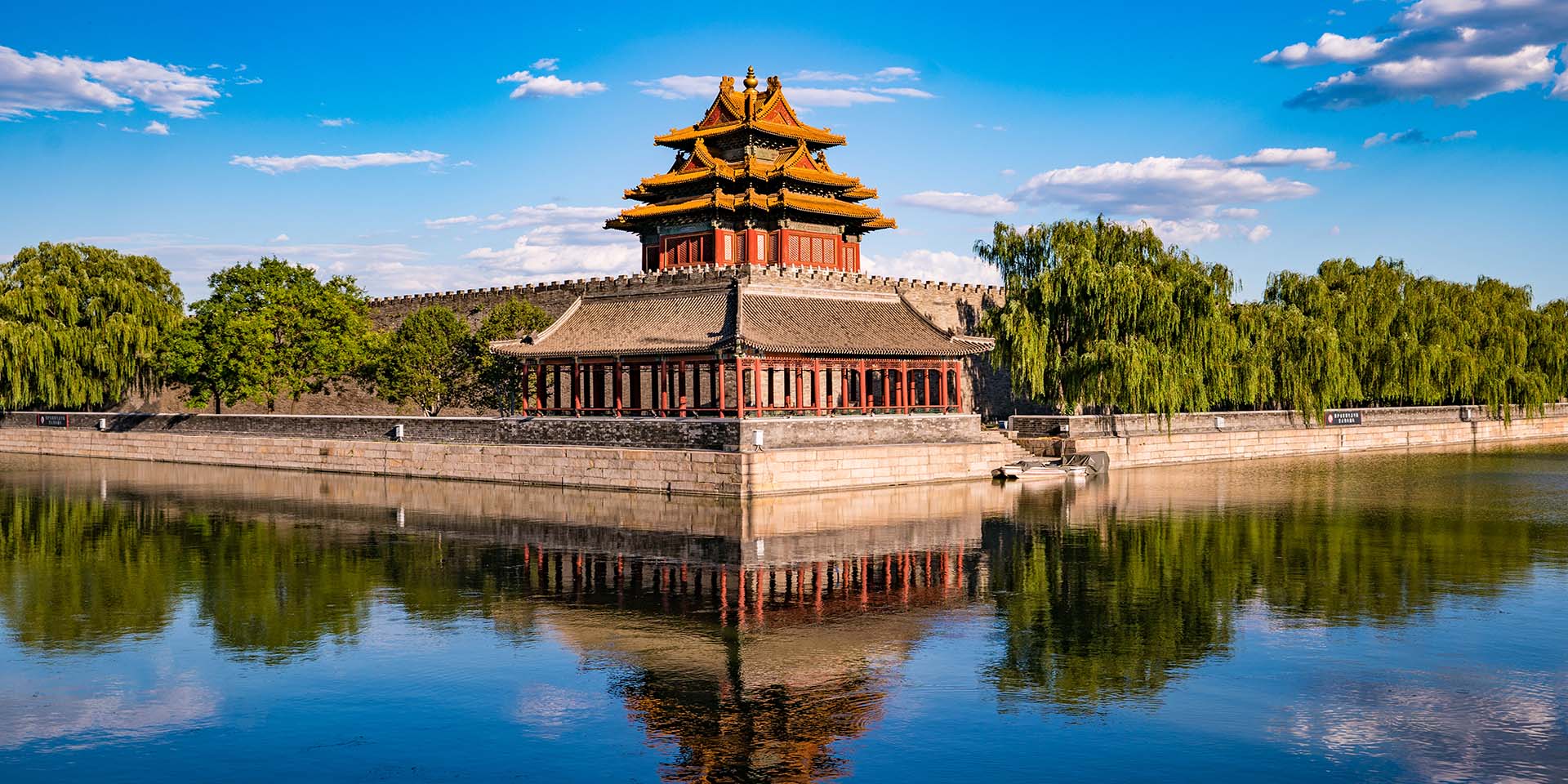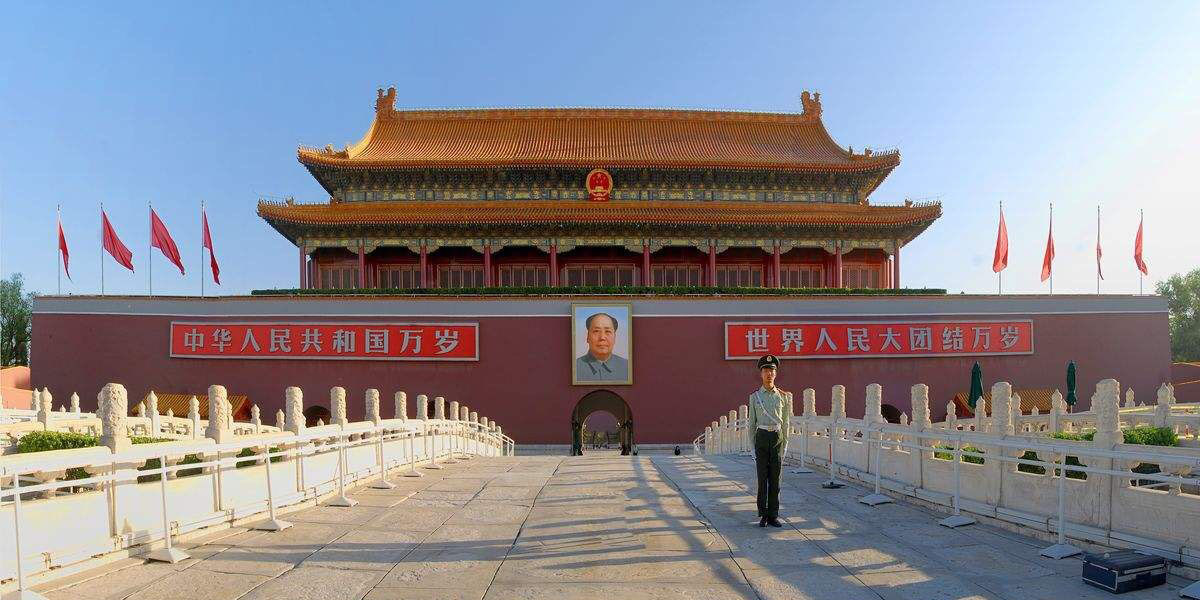Beijing Airport Pickup


 marcopolo@chinatoursnet.com
marcopolo@chinatoursnet.com
Home / Beijing Tours/ Detail

Forbidden City
.png)
.png)
Half Day Beijing Tour Explore Tiananmen Square and Forbidden City
1 Person $165 $ 165
2 Person $98 $ 98
3 Person $88 $ 88
4 Person $77 $ 77
5 Person $70 $ 70
6 Person $68 $ 68
7 Person $66 $ 66
8 Person $64 $ 64
9 Person $62 $ 62
10 Person $60 $ 60
10> Person $60 $60

Travel personnel
Number of rooms
Total Price $0
00
:00
:00
:0
Our company offers you unforgettable travel at do not calculate the cost price, Please make sure to share our website and your travel videos and photos. Thank you
According to your travel date, daily departure. No booking number of people limit, if you are the first person to join the group tour, please click book now or initiate group tour booking, your group tour booking is successfulIf.
If we have a reservation for your travel date, please click to join the tour. Please pay full payment by Paypal or Credit Card.
This is the best way for you to save money and enjoy a pleasant tour.
In order to form a group as soon as possible, please share this tour details to your circle of friends and social media.
Share our tour itinerary on Facebook and Twitter, each applicant needs to share 20 people to register as our members, within the specified time. Will succeed in getting free group tour. The travel date is unlimited.
The member registration must be true information. If there is any fake, the free travel qualification will be cancelled
The number of members who complete the membership registration requirements within 24 hours can get free travel, which is invalid if it is out of time.
Highlights
Visit the most worthy of the buildings and palaces, skip the line for express entry use VIP access to enter to the largest ancient imperial palaces. Accompanied by a professional tour guide, your tour starts with experiencing the solemn Tiananmen Square recording the persistent revolutionary spirit and fearless heroic soul. Get acquainted with the long history and imperial life at the Forbidden City. Understand the history and culture from the tour guide’s wonderful presentation. Marvel at its architecture and ancient historical culture. Enjoy a cup of coffee or tea in the imperial garden like an emperor and an empress. Welcome!
GUARANTEE OF SERVICE
.png) NO HIDDEN CHARGES
NO HIDDEN CHARGES
.png) BEST PRICE GUARANTEE
BEST PRICE GUARANTEE
.png) MONEY BACK GUARANTEE
MONEY BACK GUARANTEE
.png) PROFESSIONAL TOUR OPERATING TEAM
PROFESSIONAL TOUR OPERATING TEAM

Forbidden City
The Forbidden City has now become recognized as one of the five most important palaces in the world. It was declared a World Heritage Site in 1987, and is listed by UNESCO as the largest collection of preserved ancient wooden structures in the world.
Forbidden City

Tiananmen Square
Tiananmen Square is within the top ten largest city squares in the world, where you can visit the Tiananmen Tower, Monument to the People's Heroes, Great Hall of the People, Chairman Mao Zedong Memorial Hall and see the national flag raising ceremony.
Tiananmen Square
Tour Itinerary
 Open All
Open All
Day 1 Beijing
Tiananmen Square, Forbidden City
Our professional tour guide and driver will pick you up from the hotel and start the tour at 8 a.m. You will have a sightseeing experience on the architecture along the road en-route our destination. For the very first time, you have come to the heart of China, walk above the biggest urban center square in the world, and marvel at the solemn Tiananmen Square. After taking some memorable photos, move to the palace museum which is the imperial palace of Ming and Qing Dynasty, named as Forbidden City in the past. You will marvel at the architecture essence of Chinese ancient palace walking above the passage which once represented the supreme power of the emperor before arriving at the main gate of the Forbidden City.
Stop over and quench your thirst from all the walking by enjoying a cup of coffee or tea in the imperial garden, like an emperor and empress. The impressive tour ends by sending you back to the hotel.
Scenic spots included in the itinerary

.png)

.png)
.png)
Dexule Suite
Hotel Position : Plaza del Angel, 12, 08002 Barcelona, Spain
Opened:2000
Number of rooms:108
Postcode:100007
Redecorated:2017
The Ping'anfu Hotel (Ping'anfu Binguan) is a luxury hotel located in the hustle and bustle of the city center. It is only 4 kilometers from the railway station and 28 kilometers from the airport. This hotel provide comfortable rooms, ranging from standard doubles to deluxe suites. Facilities in rooms include international direct dial telephones, satellite televisions, central air conditioning and mini bars. Room service is available on request. Guests of the hotel will also have the chance to relax in the sauna and massage center. The hotel has numerous restaurants, mostly serving Chinese cuisine.
Check-in & Check-out
Check-in from 14:00
Check-out before 12:00
Smoking is now strictly prohibited within all public and enclosed spaces in Beijing. This hotel will NOT offer smoking rooms.
Opened:2000
Number of rooms:108
Postcode:100007
Redecorated:2017
Price Includes
.png) Entrance fees
Entrance fees
.png) Hotel pickup and drop-off
Hotel pickup and drop-off
.png) A cup of drink
A cup of drink
.png) VIP access to book the ticket of forbidden city
VIP access to book the ticket of forbidden city
Excludes
.png) Gratuities (recommended)
Gratuities (recommended)
.png) Meal
Meal
Self-financed Projects
 Transport
Transport
Beijing Airport Pickup
Beijing Airport Drop-off
 Food
Food
Peking Roast Duck
Hot Pot
 Program
Program
Beijng Acrobatic Show
Peking Opera Show
Chinese Kungfu Show
Golden Mask Dynasty Show
 Scenic
Scenic
Temple of Heaven
Summer Palace
Jingshan Park

 chinatoursnet
chinatoursnet
benniejay

mirceao455
Bucharest, Romania
2funworldtravers
pedro148595
Mdezarraga2

stevensE4605SC
Durban, South Africa

NYCfoodiegirl
New York, NY

NancyVaB
aklein729
Sreesagubadi
valsayn, Trinidad and Tobago
Quick Answer
![]()
Vanitha Kumar
2019.08.17
Hello Dear Vanitha Kumar:
Warm greetings from chinatoursnet! 10 year old child price same as adult, this Beijing half day tour to Tiananmen Square and Forbidden City will pick up you from train station or your hotel, after Forbidden City tour will drop off you at Beijing South train station. Price cost USD98 per person. This is the link where to booking the tour:
https://www.chinatoursnet.com/beijing-tours/a0424.html
Best regards
Booking Note
How to Choose Tour Type?
Affordable Group Tour:
Our small group tour is around of 15 peoples picked up from different hotels. Suitable for tourists with limited budget and who would like to travel with others from different countries.
Best Value Private Tour:
More flexible and time saving.No need to wait for other tourists.Flexible schedule . Possible to be customized for your own itinerary. A privet tour guide and air-conditioned vehicle will be at your service.
How to Book?
1. You can book online, choose to pay the deposit or full payment. We accept payment by PayPal, Credit Card, Wechat and Bank Transfer. After booking, we will send you a booking confirmation email.
2. When you arrive at the departure city, the exactly pick up time will inform by your tour guide though your hotel one night before your tour date.
3.Pick-up Service: To ensure the morning pick-up going smoothly as scheduled, we suggest you choose downtown hotels within the fourth ring road of the city. An additional transfer fee will be incurred if your hotel is outside the above mentioned area. If your hotel is located in a narrow lane or an apartment block, we suggest you find the nearest hotel on the main street as your pick-up point.
Cancellation Policy:
If you cancel at least 7 day(s) in advance of the scheduled departure, there is no cancellation fee.
If you cancel between 3 and 6 day(s) in advance of the scheduled departure, there is a 50 percent cancellation fee.
If you cancel within 2 day(s) of the scheduled departure, there is a 100 percent cancellation fee.
Hotel, flight and train ticket fees are not refundable.
.png) Tour Code: A0424
Tour Code: A0424
.png) Duration: 0.5day
Duration: 0.5day
.png) Departure date: Everyday
Departure date: Everyday
.png) Tour type: Private
Tour type: Private
.png)
.png)
.png)
.png)
 marcopolo@chinatoursnet.com
marcopolo@chinatoursnet.com


Phone:+86-13683536536
WhatsApp/iMessage:+86-13683536536
WeChat:chinatoursnet
Acrobatics

Total Price:
$
